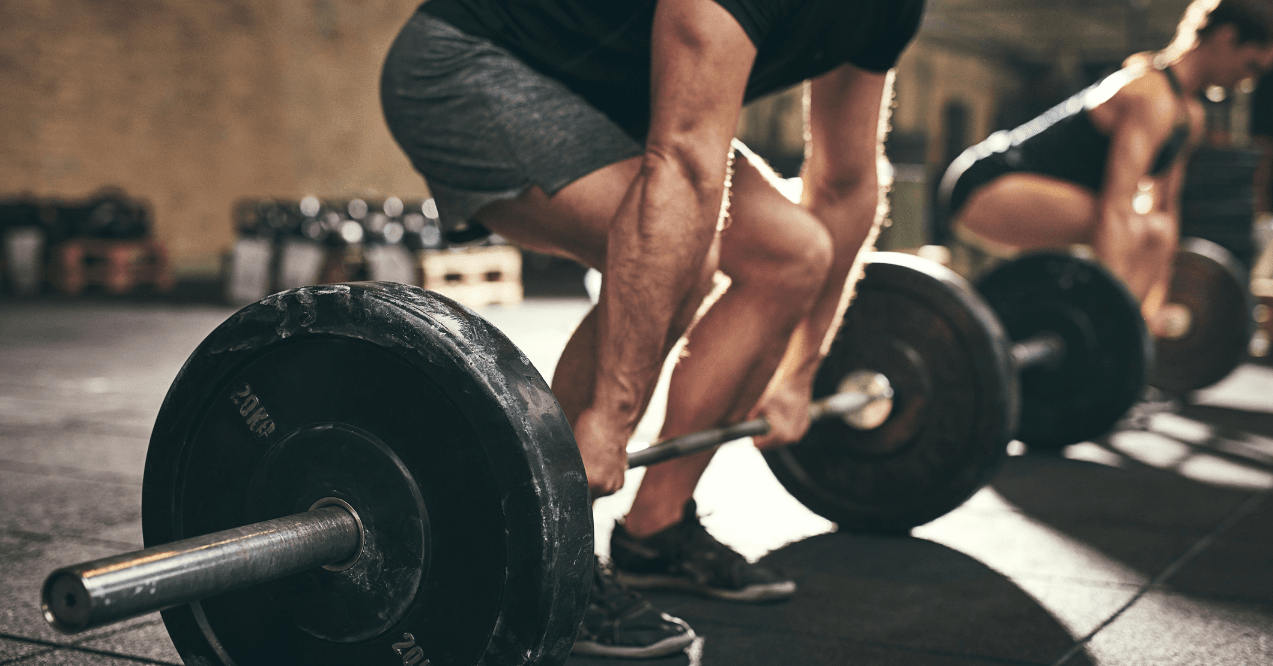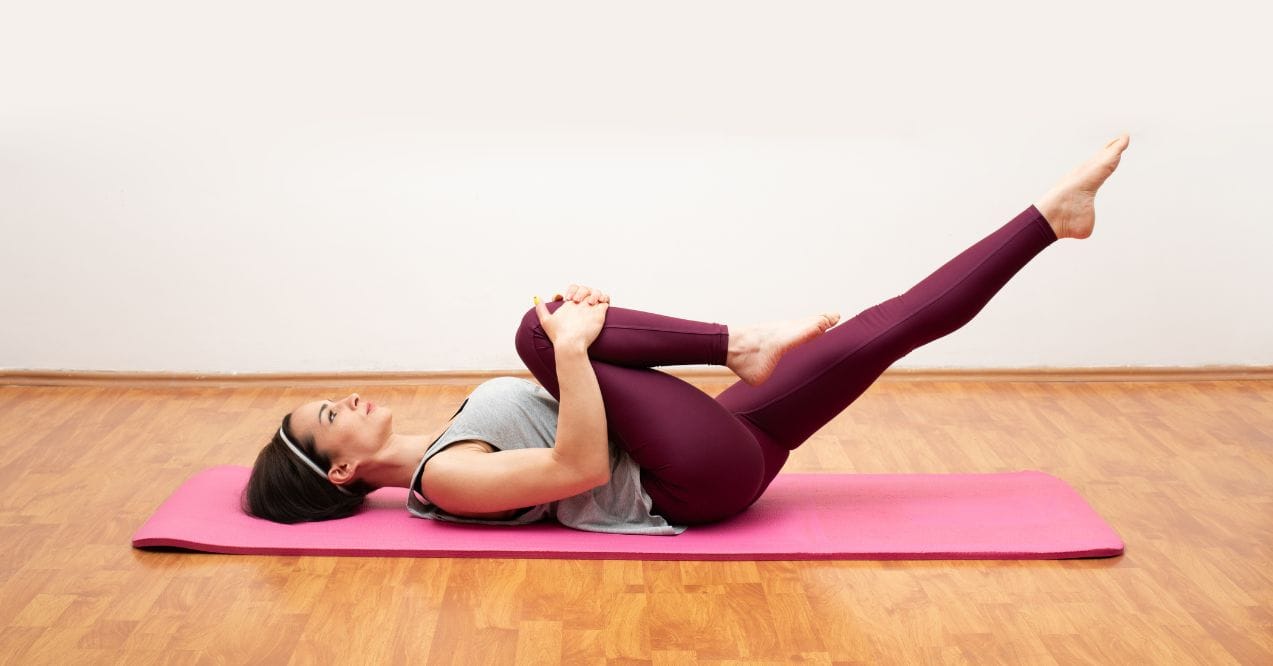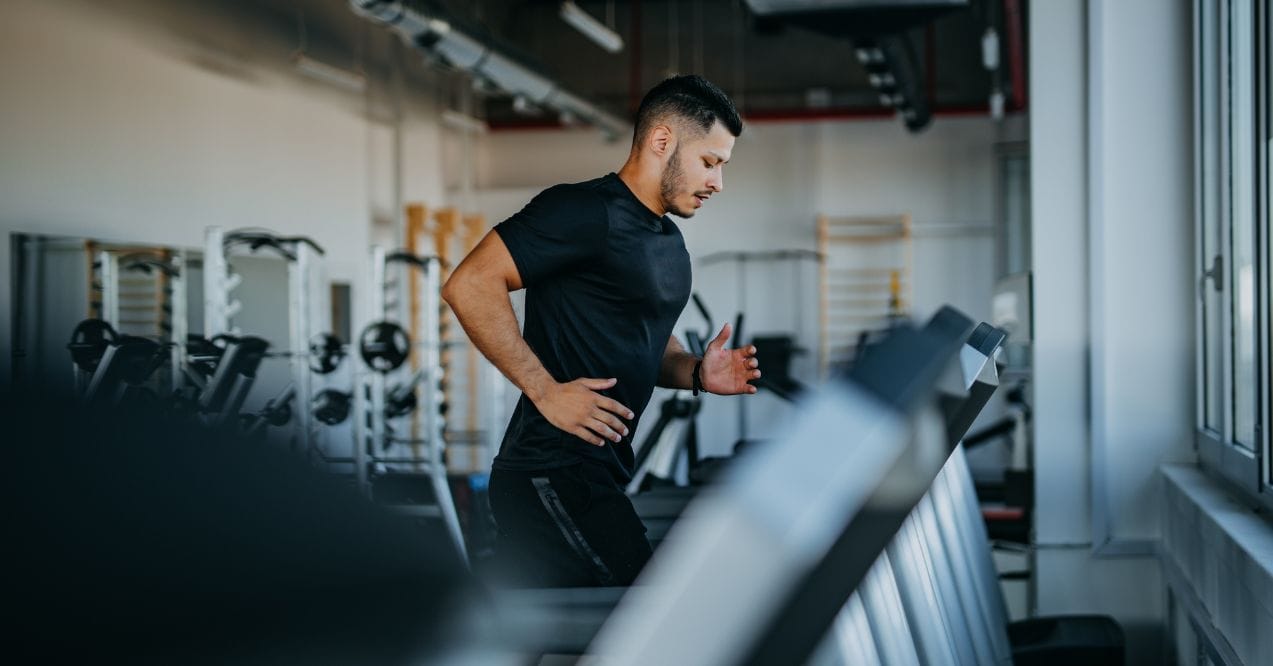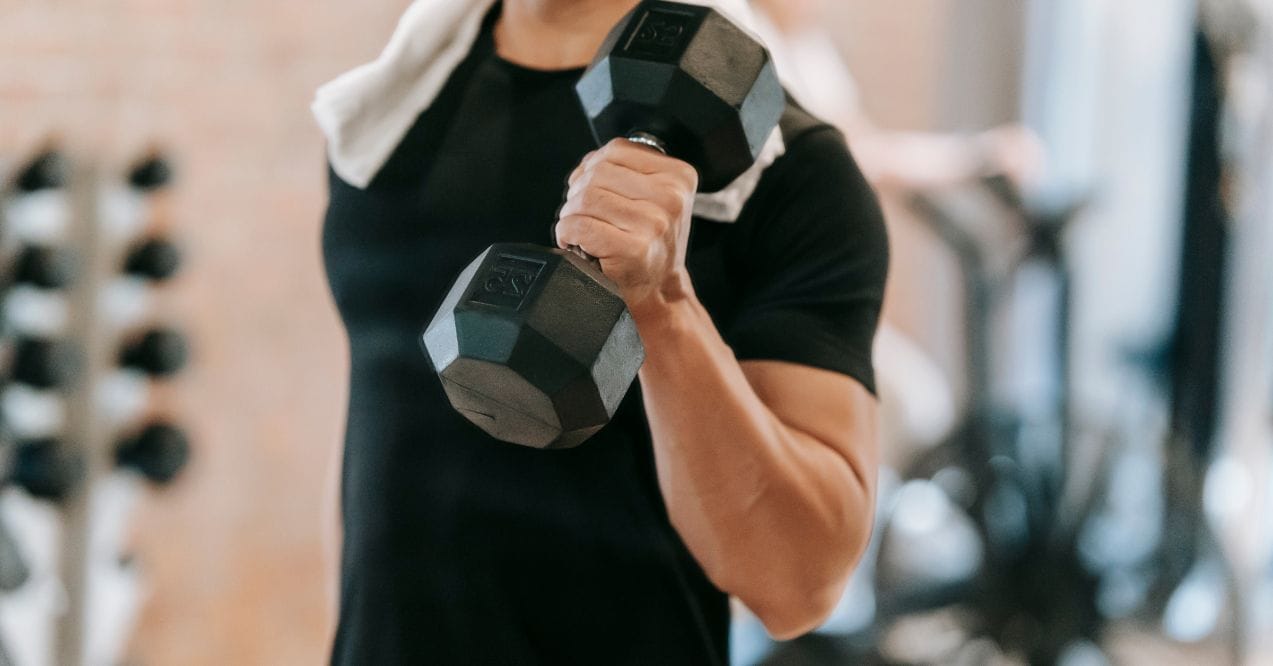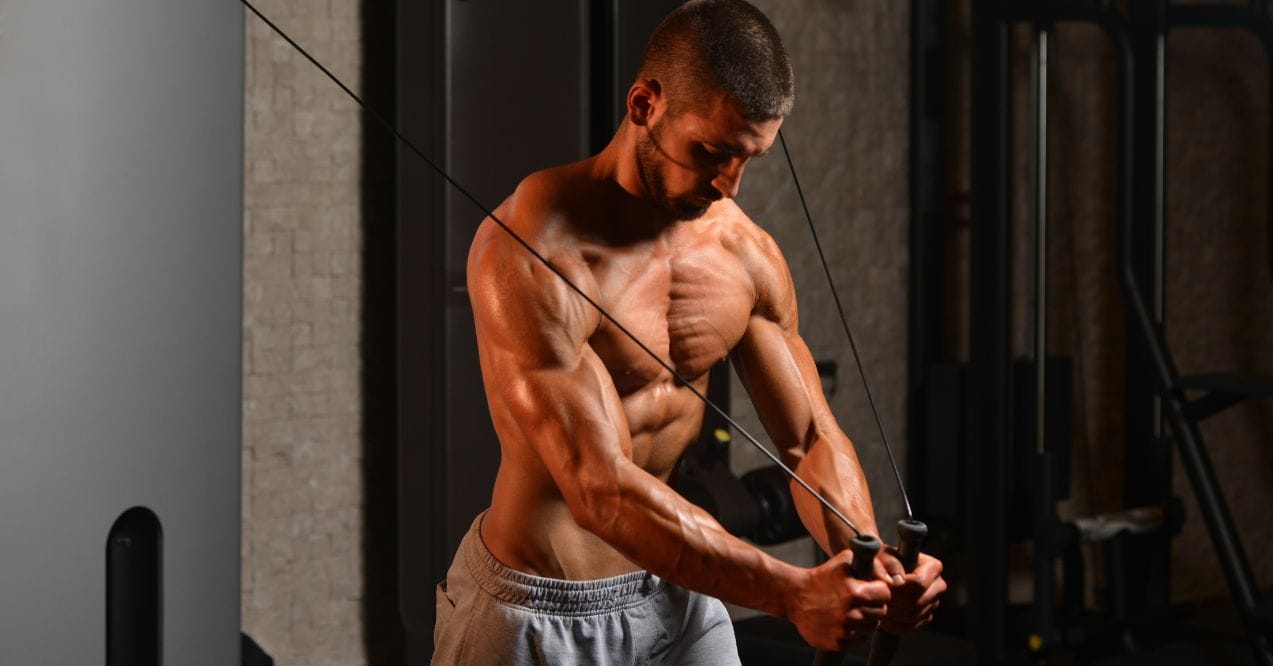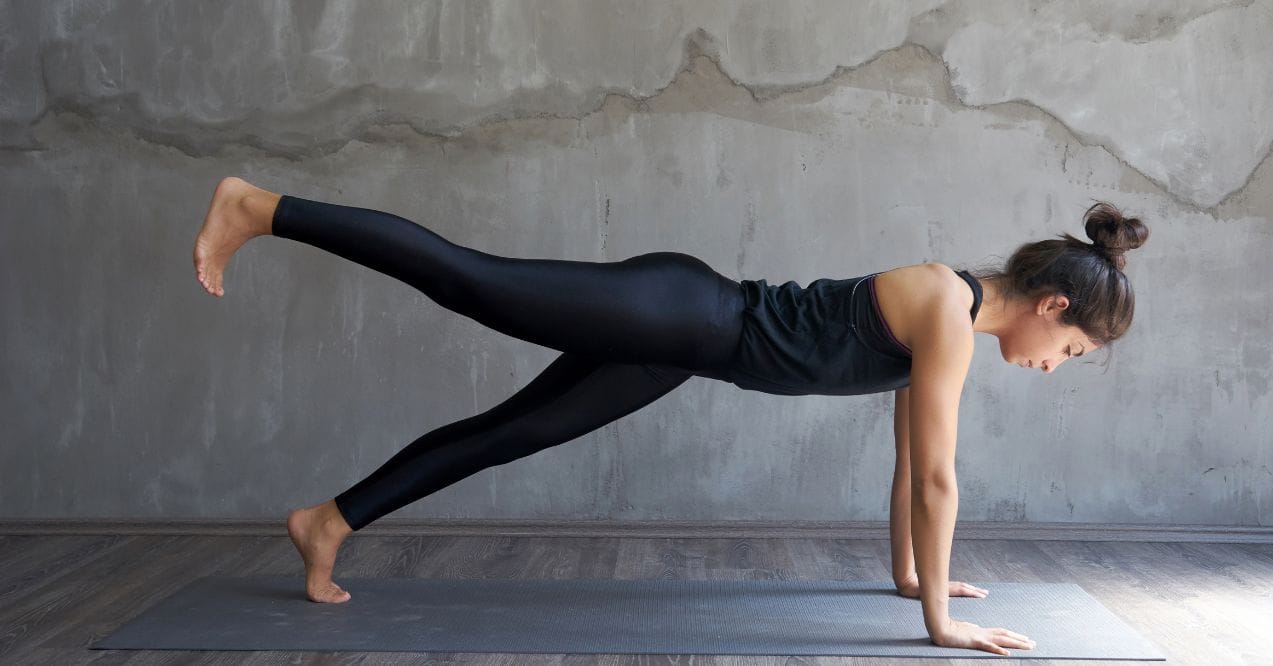8 Best Back Exercises with Cables for Strength and Size
Building a strong, well-developed back isn’t just about aesthetics – it’s essential for overall strength, posture, and athletic performance. Back exercises with cables offer unique advantages that free weights and bodyweight movements can’t match. The constant tension provided by cable machines targets muscle fibers throughout entire movement patterns, creating both peak contraction and stretch-mediated growth.
Whether you’re looking to build impressive lat spread, improve posture, or increase pulling strength, cable-based training can be your secret weapon. These versatile tools allow for precise angle adjustments and resistance modifications to target specific back regions, making them ideal for beginners and advanced lifters alike.

Why choose cable back exercises?
Cable machines offer unique advantages that make them exceptional for developing back strength and size. Unlike free weights, back exercises with cables maintain constant tension throughout the entire range of motion – even at the easiest points of an exercise. This continuous resistance creates an optimal time under tension workout effect, a proven method for stimulating muscle growth.
The pulley system allows you to target muscles from angles impossible with barbells or dumbbells. This versatility means you can hit your lats, rhomboids, and traps from multiple directions for complete development.
Key advantages include:
- Adjustable resistance for precise progression
- Safer for many lifters compared to heavy free weights
- Reduced joint stress while maintaining muscle stimulation
- Control throughout eccentric (lowering) portions
- Ability to isolate specific muscle regions
- Excellent for unilateral (single-side) training to correct imbalances
Cable machines also provide smooth, fluid resistance that challenges muscles differently than the varied resistance curve of free weights. This makes cable work ideal both as a primary training method and as a supplement to your existing gym back workout machines routine.
Anatomy of the back muscles
Understanding back anatomy helps optimize your training for complete development. The back consists of several major muscle groups that each contribute to posture, movement, and overall strength.
- Latissimus Dorsi (Lats) – These wing-like muscles span from your mid-back to under your arms. They’re responsible for shoulder extension and adduction – pulling movements like rows and pulldowns. Well-developed lats create the coveted V-taper physique.
- Trapezius (Traps) – This diamond-shaped muscle extends from your neck to mid-back. Upper traps elevate your shoulders, middle traps retract your shoulder blades, and lower traps depress your shoulder blades. Strong traps support proper posture and neck alignment.
- Rhomboids – Located between your shoulder blades, these muscles retract and rotate your scapulae. They’re crucial for posture and shoulder health.
- Erector Spinae – This group runs along your spine and supports spinal extension. Strong erectors prevent back pain and maintain proper alignment during lifts.
- Rear Deltoids – While technically shoulder muscles, rear delts function with your back during pulling movements and contribute to balanced shoulder development.
Training these muscle groups is essential to understanding what is body recomposition. A well-developed back not only looks impressive but also supports proper posture, prevents injuries, and enhances overall functional strength.
The 8 best cable back exercises
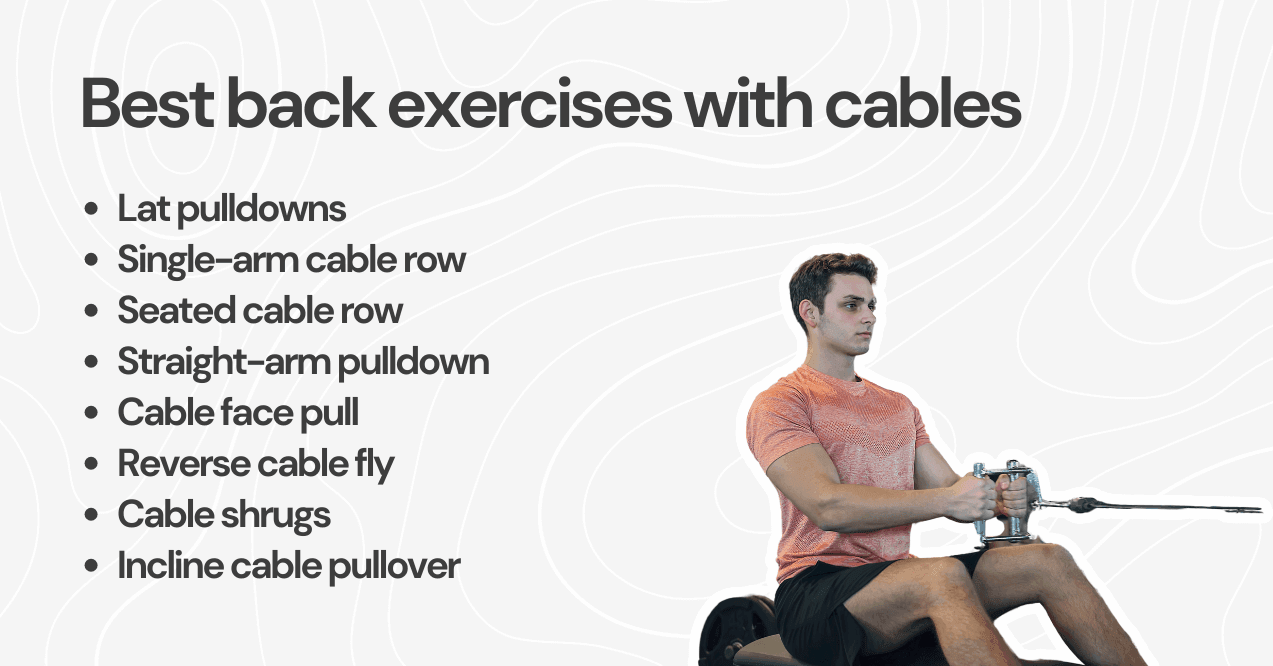
When it comes to developing a powerful, sculpted back, back exercises using cable machine equipment provide unmatched versatility and effectiveness. These exercises allow for constant tension, variable angles, and controlled movement patterns that target all regions of your back. From width-building lat work to thickness-building rows, this comprehensive selection will transform your back training for maximum results.
Lat pulldowns
The lat pulldown is a cornerstone of back training, effectively targeting the latissimus dorsi (lats) while engaging the biceps, rhomboids, and rear deltoids as secondary muscles.
How to perform:
- Sit facing the cable machine with knees secured under the pads
- Grasp the bar with a grip slightly wider than shoulder-width
- Pull the bar down to your upper chest while slightly arching your back
- Hold the contraction for a moment, focusing on squeezing your lats
- Slowly return to the starting position with controlled movement
The lat extension cable motion creates optimal muscle activation through a full range of motion, making it an excellent alternative for those who struggle with traditional pull-ups. The adjustable resistance allows beginners to start light while advanced lifters can progress to challenging weights.
For maximum effectiveness, experiment with different grip widths and attachments. A wider grip emphasizes lat width while a neutral grip (palms facing each other) better engages the lower lats and reduces shoulder strain.
Single-arm cable row
The 1 arm cable row isolates each side of your back individually, addressing muscle imbalances that often develop from favoring your dominant side during bilateral exercises.
How to perform:
- Stand perpendicular to the cable machine with feet shoulder-width apart
- Grasp the handle with one hand, palm facing in
- Step back to create tension in the cable, maintaining a slight forward lean
- Pull the handle toward your hip while keeping your elbow close to your body
- Squeeze your back muscles at full contraction
- Control the return to starting position
- Complete all reps on one side before switching
This unilateral exercise forces your core to stabilize against rotational forces, creating additional functional strength benefits. It also allows for greater range of motion at the end of each rep, fully engaging the lats and mid-back muscles.
For advanced lifters, try the archer row variation – maintaining the non-working arm extended straight toward the cable machine for increased core engagement and better isolation.
Seated cable row
The seated cable row is a compound pulling movement that targets multiple back muscles simultaneously, making it one of the most efficient back exercises with cables for overall development.
How to perform:
- Sit facing the cable machine with feet secured against the platform
- Grasp the attachment with arms extended and maintain slight knee bend
- Pull the handle toward your lower abdomen while keeping your back straight
- Drive your elbows back and squeeze your shoulder blades together
- Slowly return to the starting position with controlled movement
This exercise builds thickness in the middle back, particularly targeting the rhomboids and middle trapezius while engaging the lats, rear deltoids, and biceps. The seated position stabilizes your lower body, allowing complete focus on back contraction.
For maximum effectiveness:
- Keep your chest up throughout the movement
- Avoid using momentum by rocking forward and backward
- Experiment with different attachments (V-bar, straight bar, rope) to target slightly different muscles
Straight-arm pulldown
The straight-arm pulldown creates intense activation of the lats while doubling as an effective lower back exercises with cable machine engagement due to the stabilization required.
How to perform:
- Stand facing the cable machine with feet shoulder-width apart
- Grasp the straight or rope attachment with both hands
- Start with arms extended in front at shoulder height
- Keep arms straight (slight elbow bend is acceptable) and pull the attachment down toward your thighs
- Focus on using your lats, not your arms, to move the weight
- Control the return to starting position
This exercise uniquely isolates the lats by removing most bicep involvement, creating a different stimulus compared to traditional pulling movements. The constant tension through the entire range of motion makes it excellent for developing mind-muscle connection with your lats.
The straight-arm pulldown also engages your core substantially, as your abdominals must stabilize against the forward pull of the cable throughout the movement.
Cable face pull
The cable face pull targets the often-neglected posterior deltoids, mid-trapezius, and rhomboids—muscles crucial for shoulder health and proper posture.
How to perform:
- Stand facing the cable machine with the pulley set at upper chest height
- Grasp a rope attachment with both hands, palms facing down
- Step back to create tension and raise your elbows to shoulder height
- Pull the rope toward your face, separating your hands as you pull
- Focus on pulling your shoulder blades together
- Control the return to starting position
This exercise is exceptional for counteracting the forward-shoulder posture that develops from daily activities and chest-focused training. The upper body warm ups cable face pull prepares your shoulders for heavier pulling movements while improving mobility.
For maximum effectiveness:
- Keep your elbows high throughout the movement
- Focus on external rotation at the end of the movement (turning your hands outward)
- Use moderate weight with higher repetitions (12-15) for best results
Reverse cable fly
The reverse cable fly isolates the rear deltoids and upper trapezius, muscles that are crucial for balanced shoulder development and improved posture.
How to perform:
- Stand in the center of a cable crossover station
- Grasp the handles from high pulleys with palms facing inward
- Step back to create tension, with a slight forward lean from the hips
- Keeping a soft bend in your elbows, open your arms wide to the sides
- Squeeze your shoulder blades together at the end of the movement
- Control the return to starting position
This exercise effectively targets the posterior shoulder muscles in a way that’s difficult to replicate with free weights. The constant tension provided by the cables creates superior muscle activation throughout the entire range of motion.
For better results:
- Maintain a slight bend in your elbows throughout the movement
- Keep your chest up and core engaged
- Focus on squeezing your shoulder blades together rather than just moving your arms
Cable shrugs
Cable shrugs offer a unique stimulus for trapezius development compared to traditional dumbbell or barbell shrugs.
How to perform:
- Stand facing a low pulley with feet shoulder-width apart
- Grasp the bar or handles with arms fully extended
- Keep your shoulders down and back, chest up
- Elevate your shoulders directly upward as high as possible
- Hold the contraction briefly at the top
- Lower slowly back to starting position
The upward angle of resistance created by the cable provides a different stimulus than gravity-based resistance from free weights. This variation keeps tension on the traps throughout the entire movement, even at the bottom position.
For maximum trap activation:
- Focus on lifting straight up rather than rolling your shoulders
- Keep your arms straight but not locked
- Experiment with forward, backward, and lateral cable positions for different angles of resistance
Incline cable pullover
The incline cable pullover primarily targets the latissimus dorsi while also engaging the chest, serratus anterior, and triceps. This exercise helps develop the connection between upper and lower back cable exercises.
How to perform:
- Position an incline bench facing away from a cable machine
- Lie back on the bench with feet firmly planted
- Reach overhead to grasp a straight bar or rope attachment
- Begin with arms extended overhead
- Keeping elbows slightly bent, pull the attachment in an arc toward your thighs
- Squeeze your lats at the bottom of the movement
- Slowly return to the starting position
This exercise creates an exceptional stretch in the lats at the starting position and intense contraction at the finish. The incline angle increases the range of motion compared to traditional pullovers, maximizing muscle fiber recruitment.
For better results:
- Adjust the bench angle to target slightly different areas of the lats
- Focus on pulling with your lats rather than your arms
- Maintain control throughout the entire range of motion
How to build an effective cable back workout?

Creating effective cable back workouts requires a strategic approach to target all areas of your back while allowing proper recovery. Follow these steps to design your optimal routine:
- Select exercise variety – Choose 3-5 exercises that target different regions (upper, mid, lower back) and movement patterns (vertical pulls, horizontal rows).
- Balance muscle focus – Include at least one exercise each for lats, rhomboids/mid-back, and traps.
- Arrange by complexity – Start with compound movements (seated rows, lat pulldowns) when you’re fresh, then move to isolation exercises.
- Set proper volume – For growth, aim for 12-20 total sets per week, split across 2-3 workouts.
- Manipulate rep ranges – Use 6-8 reps for strength, 8-12 for hypertrophy, and 12-15 for endurance.
- Progressive overload – Increase weight, reps, or sets every 1-2 weeks to continue making gains.
- Rest intervals – Allow 60-90 seconds between sets for optimal recovery and performance.
Beginner to advanced cable back workouts
Whether you’re new to strength training or a seasoned gym veteran, these targeted cable workouts will help you build the strong, sculpted back you’re after. Each routine is designed to match your experience level while providing the right stimulus for growth and strength development.
Beginner cable back workout
This routine focuses on foundational movements with controlled form to build a strong base and develop proper mind-muscle connection.
Workout details:
- Frequency: 2x per week with at least 48 hours between sessions
- Sets: 3 per exercise
- Reps: 12-15
- Rest: 60-90 seconds between sets
Exercises:
Lat pulldown (wide grip)
- Focus on controlled movement and full range of motion
- Avoid pulling with arms only; engage your lats
Seated cable row (close grip)
- Maintain upright posture throughout
- Squeeze shoulder blades together at contraction
Cable face pull
- Use lighter weight to master proper form
- Keep elbows at shoulder height throughout
Straight-arm pulldown
- Start with modest weight to learn the movement pattern
- Focus on feeling the stretch in your lats
Intermediate cable back workout
This workout introduces unilateral movements and more challenging variations to address muscle imbalances and stimulate new growth.
Workout details:
- Frequency: 2-3x per week
- Sets: 4 per exercise
- Reps: 10-12
- Rest: 60-75 seconds between sets
Exercises:
Seated cable row (wide grip)
- Use a weight that challenges you for 10-12 quality reps
- Focus on full retraction of your shoulder blades
Single-arm cable row
- Address any left/right imbalances
- Maintain stable torso position to resist rotation
Lat pulldown (neutral grip)
- Focus on full stretch at the top
- Drive elbows down and back during contraction
Cable face pull with external rotation
- Emphasize the rotational component at the end of movement
- Keep tension on the rear delts throughout
Cable shrugs
- Maintain strict form with direct upward movement
- Hold peak contraction for 1-2 seconds
This routine can be enhanced with machine back exercises with dumbbells supersets for increased intensity. Try pairing cable movements with dumbbell pullovers or bent-over rows to create complementary stimulus.
Advanced cable back workout
This high-intensity routine combines heavy compound movements with targeted isolation work to maximize back development and strength gains.
Workout details:
- Frequency: 2x per week (can split into width/thickness focus days)
- Sets: 4-5 per exercise
- Reps: Varied (noted per exercise)
- Rest: 90-120 seconds for compound movements, 60 seconds for isolation
Exercises:
Seated cable row – 4 sets of 6-8 reps (heavy)
- Focus on explosive concentric phase
- Control eccentric phase (3-second lowering)
- Use challenging weight that maintains strict form
Single-arm cable row – 4 sets of 8-10 reps per side
- Incorporate a pause at peak contraction
- Maintain core bracing throughout movement
Incline cable pullover – 4 sets of 10-12 reps
- Emphasize the stretch position
- Focus on lat activation throughout the movement
- Connect upper and lower back engagement
Straight-arm pulldown supersetted with reverse cable fly – 3 sets of 12-10 reps
- Minimal rest between exercises
- Maintain tension throughout both movements
Cable face pull with pause – 3 sets of 12-15 reps
- Hold contraction for 2 seconds at peak
- Focus on external rotation and rear delt engagement
This advanced routine incorporates varied rep ranges, tempos, and intensity techniques to break through plateaus and stimulate maximum muscle fiber recruitment across all areas of the back.
Pro tips for back training with cables
Take your back exercises with cables to the next level with these expert strategies:
- Mind-muscle connection – Before heavy sets, perform 1-2 light activation sets focusing purely on feeling the target muscles working.
- Angle manipulation – Slightly adjust your body position during exercises to target different muscle fibers – lean back more during rows to hit upper back, forward for lower lats.
- Tempo training – Slow down the eccentric (lowering) phase to 3-4 seconds for enhanced muscle damage and growth stimulus.
- Grip variations – Regularly switch between pronated, supinated, and neutral grips to prevent overuse injuries and target muscles differently.
- Balanced programming – Pair your back training with a complementary chest and tricep workout to create balanced development across all pushing and pulling muscles.
- Progressive range of motion – Start with partial reps when learning new exercises, gradually increasing ROM as technique improves.
- Attachment variety – Experiment with different handles and attachments – rope, V-bar, straight bar – to find what creates the strongest mind-muscle connection for you.
Fueling your back training properly is just as important as the exercises themselves. Bone Broth Protein powder provides 20g of clean protein per serving with a delicious chocolate flavor. The collagen and amino acids in bone broth protein can support connective tissue health while you train with cables.
With 98% pure protein and no fillers or additives, this supplement offers a digestive-friendly alternative to traditional protein powders. Consider adding this to your nutrition strategy to support your muscle recovery needs during intense back training programs.

Conclusion
Back exercises with cables provide unmatched versatility for developing strength, size, and definition across all areas of your back. The constant tension, adjustable angles, and controlled resistance make cable training ideal for everyone from beginners to advanced lifters. By incorporating the eight exercises outlined in this guide and following the structured workout plans, you’ll target every back muscle effectively and efficiently.
Remember to focus on proper form, progressive overload, and consistent training for best results. Whether you’re aiming to build an impressive V-taper, improve posture, or increase functional strength, cable machines offer the tools you need to transform your back development.
Yes, cable machines provide sufficient resistance and versatility to build significant back strength and size. The constant tension and varied angles allow for complete development of all back muscles through proper exercise selection and progressive overload.
Absolutely. Cable exercises are ideal for beginners as they provide controlled movement patterns, adjustable resistance, and reduced injury risk compared to free weights. Start with basic exercises like lat pulldowns and seated rows with lighter weights.
Lat pulldowns, straight-arm pulldowns, and incline cable pullovers most effectively target the latissimus dorsi. For maximum lat activation, focus on full range of motion, proper scapular depression, and mind-muscle connection during these movements.
Advertisement. This site offers health, wellness, fitness and nutritional information and is designed for educational purposes only. You should not rely on this information as a substitute for, nor does it replace, professional medical advice, diagnosis, or treatment. If you have any concerns or questions about your health, you should always consult with a physician or other health-care professional. Do not disregard, avoid or delay obtaining medical or health related advice from your health-care professional because of something you may have read on this site. The use of any information provided on this site is solely at your own risk.
